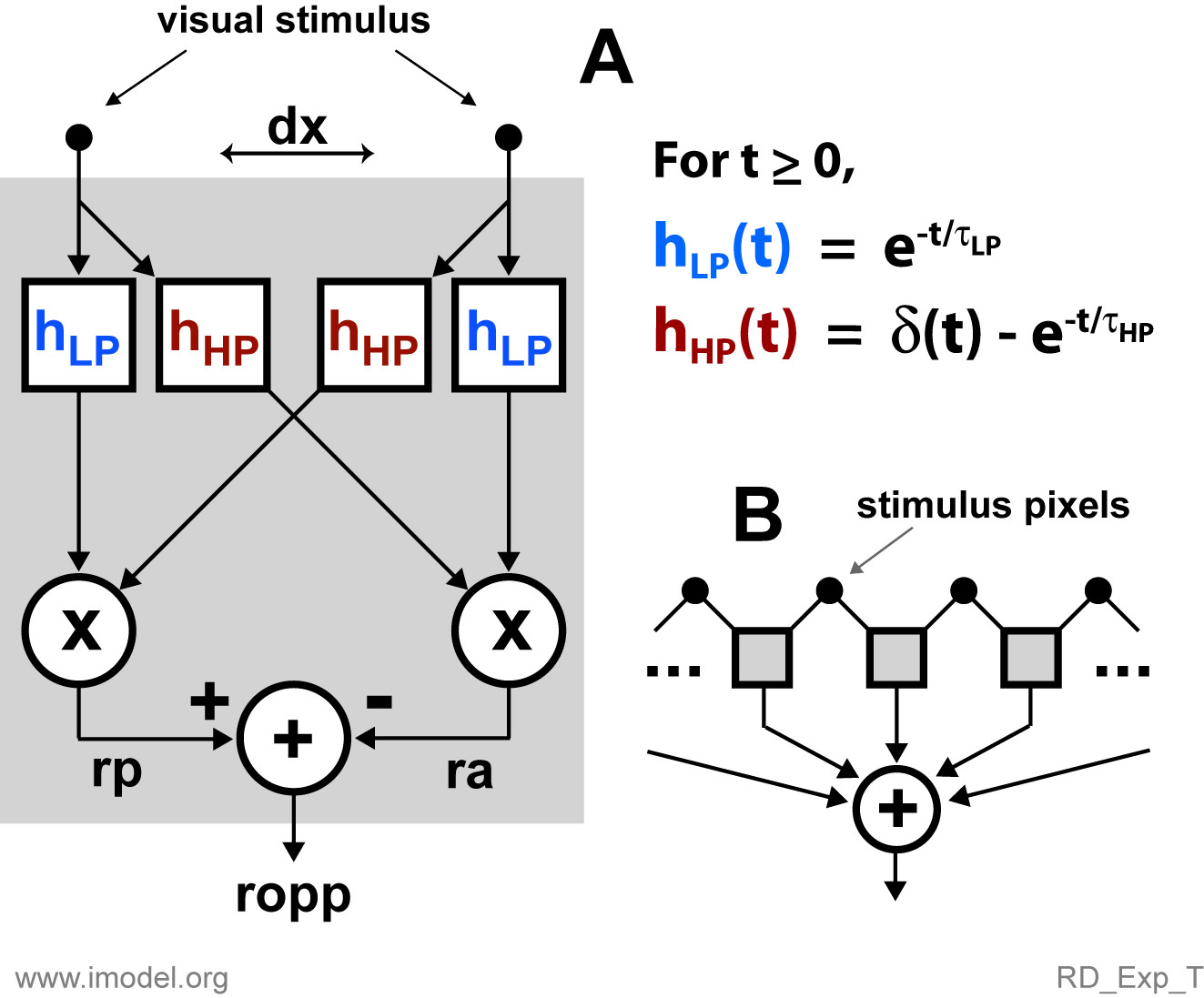DS_Gabor_One
MEO_Gabor
ME_Gabor
MEO_Gabor_Rot
ME_Gabor_Rot
RD_Exp_T
RD_2Gabor
RD_2Gabor_Rect
Variations
Reichardt Detector, Exponential Temporal Filter
This is a Reichardt detector (RD) model for direction selectivity (Reichardt, 1957; 1961) with Poisson spike generation. It consists of a set of twenty RD subunits aligned parallel and sequentially along the axis of preferred motion. Each subunit is an opponent mechanism that senses the visual input via a pair of point-like spatial detectors and uses multiplication to combine signals that are processed by either a low-pass filter or a high-pass filter, both implemented with one-sided decaying exponential functions. This form of RD model is similar to that used by Borst et al. (2005).
Results
References
- Borst A, Flanagin VL, Sompolinsky H (2005) Adaptation
without parameter change: dynamic gain control in motion detection.
PNAS 102:6172--6176.
- Reichardt W (1957) Autokorrelationsauswertung als
Funktionsprinzip des Zentralnervensystems. Zeitschrift für
Naturforschung, Teil B. 12:447--457.
- Reichardt W (1961) Autocorrelation, a principle for the evaluation of sensory information by the central nervous system. In: Sensory Communication, Rosenblith WA, ed. pp 303--317. MIT Press, Cambridge, MA.

(B) The overall model output is the sum of the ropp signals from multiple subunits aligned along the x-axis, sharing neighboring pixels, as shown.